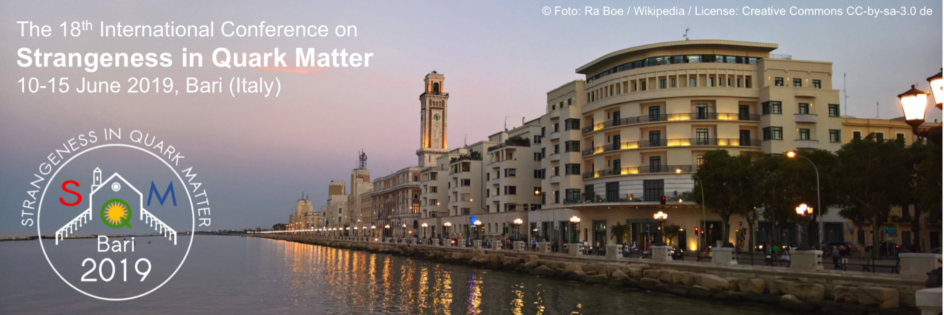Speaker
Description
Relativistic heavy-ion collisions offer a unique opportunity to study the properties of nuclear matter at very high temperature and/or high density. It is believed that resonances (like $K^{*0}$, $\phi$) are excellent probes for the medium created in heavy-ion collisions. Particularly, $K^{*0}$ (lifetime $\sim$ 4 fm/c) and $\phi$ (lifetime $\sim$ 42 fm/c) can be used to study the bulk properties of QCD matter produced in heavy-ion collisions. Because of a short lifetime, $K^{*0}$ decays inside fireball and its decay daughters interact with the medium. Therefore, properties of $K^{*0}$ can be modified by in-medium interactions. On the other hand, because of a long lifetime, the $\phi$ meson will mostly decay outside of the fireball and therefore its daughters will not have much time to rescatter in the hadronic phase. Hence, a comparison of the properties (e.g. yields, spectra, and elliptic flow) of $K^{*0}$ and $\phi$ is interesting. In addition, $\phi$-meson is considered to be a clean probe of pre-hadronic collectivity, since hadronic interaction cross section of $\phi$ meson is expected to be very small.
In this talk, we will present invariant yields of $K^{*0}$ and $\phi$ as a function of beam energy ($\sqrt{s_{NN}}$=7.7-200 GeV) measured by the STAR experiment. Resonance to non-resonance particle ratios ($\phi/K$ and $K^{*0}/K$) will be shown as a function of centrality for various beam energies. Elliptic flow ($v_{2}$) of $K^{*0}$ and $\phi$ and directed flow ($v_{1}$) of $\phi$ meson will be presented for different beam energies.
| Track | Hadron Resonances |
|---|---|
| Collaboration name | STAR Collaboration |
